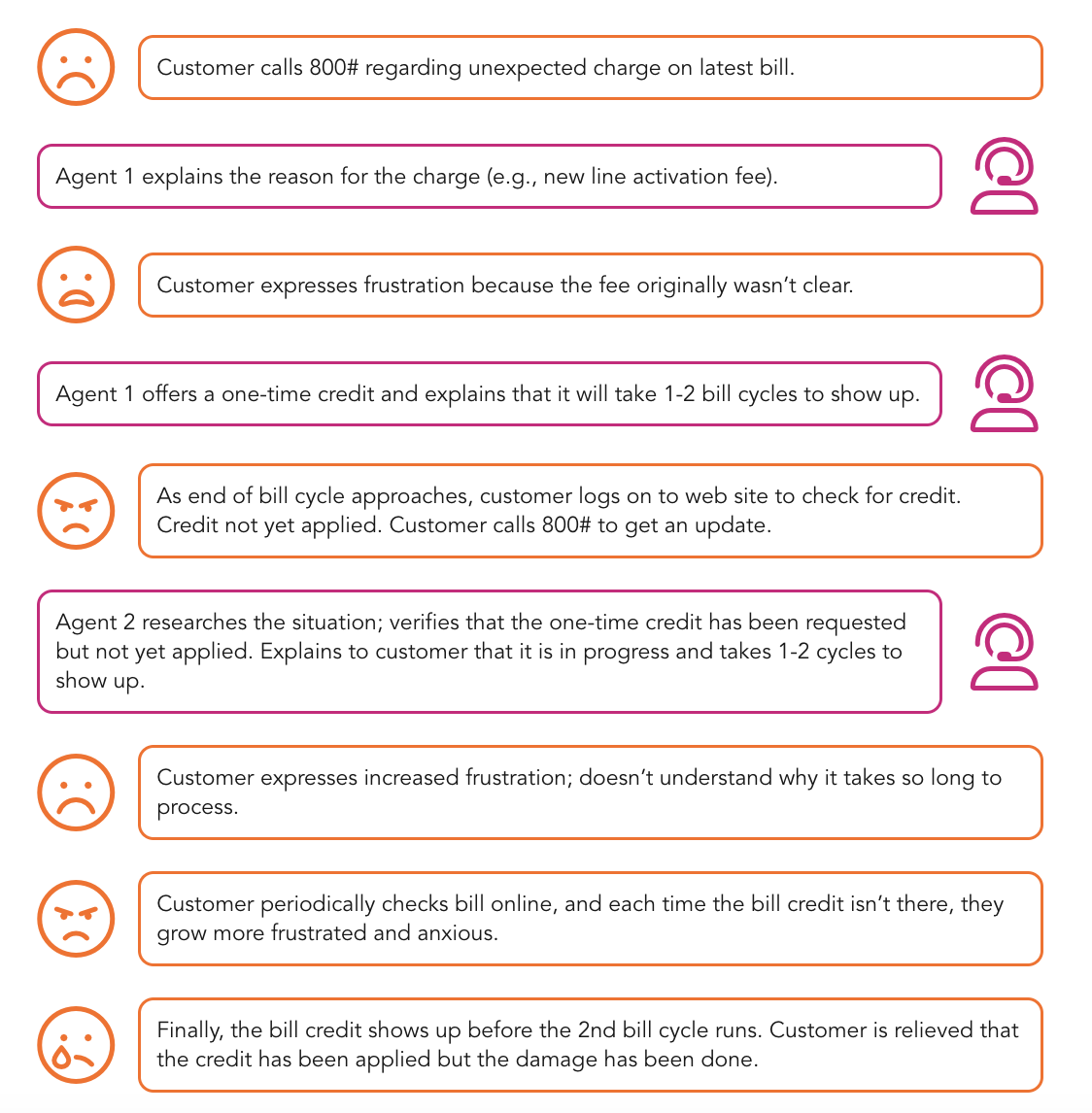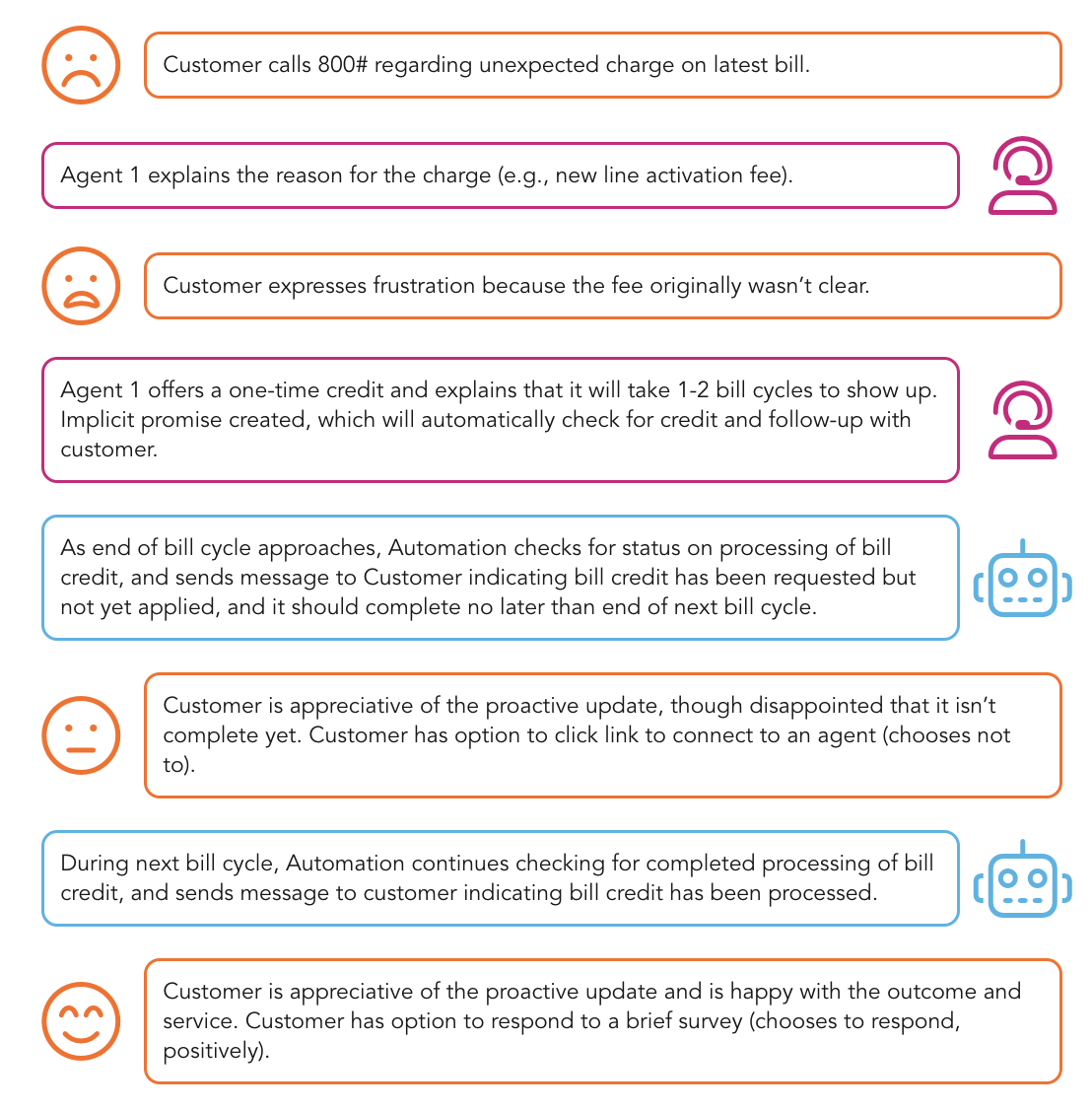Contact Center–Time to Optimize!
Two things happening are leaving people scratching their heads. Everyone is talking about a recession and the technical layoffs are now a who’s who of […]

To wrap up our series on brand protection, ask yourself “How do customers view the accessibility of your brand?” Do customers find your organization easy to work with? Are they getting their questions answered quickly? Do they have a pleasant experience when they need information? Or is it a dreadful task? You may be wondering why this matters. Well, let’s look at what the research shows:
Build Trust and Lifetime Value with Proactive Customer Care
Like it or not, most businesses view customer service in the past tense. They see it primarily as a helpdesk or emergency hotline for confused or concerned customers. Marketing and Sales build relationships; customer service fixes things when something goes wrong. As a result, it’s gained a reputation as a damage control center—a necessary, but costly, business function. However, this one-sided, reactive view overlooks its greater potential: as a proactive tool for building customer trust and lifetime value.
Instead of thinking of customer service agents as triage nurses, it’s time to start thinking of them as customer success managers—a familiar term in the B2B world but one completely foreign to B2C business. Customer success managers offer far more than customer service and technical support. They drive product and/or service adoption and usage, leading to renewals and upsell/cross-sell opportunities and fostering greater brand loyalty and advocacy. As the main touchpoint between the customer and your company, your customer service agents own the relationship. By moving beyond fixing problems to strengthening customer trust and loyalty, agents can contribute significantly to that coveted business goal: growing customer lifetime value.
So, how do you turn what historically has been a cost center, often with initiatives focused on driving costs as low as possible, into a value center, with initiatives focused on both personalized customer service and maximizing opportunities to drive revenue and increase customer lifetime value? By better leveraging the data from each customer interaction and turning it into actions that delight the customer.
Thinking—And Using Data—Proactively
Businesses today have access to more data than ever before. And with new tools that use advanced conversational AI and automation, they have access to deeper insights into customer behavior, sentiment, intent and even emotion. Today’s analytic and predictive solutions continue to evolve, with the ability to detect signs of positive advocacy, willingness to buy and even the potential to churn. They can also execute more business tasks without human intervention (and its associated costs, errors and inconsistencies). For customer service, this is a game changer. Instead of thinking in terms of tactical problem-solving, agents can engage with customers strategically. In other words, they can provide forward-thinking, proactive care.
What Is Proactive Care and Why Does It Matter?
Every successful service interaction is an opportunity to build loyalty and trust, which can result in increased customer lifetime value. Proactive care happens when customer service looks beyond the initial interaction (or interactions) for opportunities to reconnect and re-engage with a customer. This involves gathering and analyzing data at each touchpoint to create an optimized conversation that evolves and—more importantly—adds value over time. The more value you add, the more indispensable you become to the customer, and the more you can count on them to re-engage with, repurchase from and advocate for your company.
Accenture also stated that proactive, predictive services are an opportunity to build trust and mitigate the severity and frequency of customer-initiated effort.
The Three Pillars of Proactive Care
Customer interactions don’t exist in a vacuum. There’s the initial reason a customer reaches out, the interaction itself, and the time after, during which any follow-up or follow-through actions occur. Using conversational AI, automation (including unattended RPA), and solutions from RISE’s partner, Uniphore, businesses can facilitate multiple forms of proactive customer engagement. These can be broken down into three pillars based on when they occur during the customer journey:
Predictive
Something (an “anomaly”) has occurred or is likely to occur, which has a high probability of leading to an inbound contact. Predictive care involves taking the proactive steps needed to reduce the likelihood of a customer contacting customer service. This can mean sending an automated message regarding a potential issue or ensuring easy resolution through self-service channels.
Signals
During a conversation, the customer says something or exhibits a certain behavior or tone that indicates the customer may take future action. By “listening” for these signals and analyzing them using conversational AI software like U-Analyze, businesses can take proactive steps to increase the likelihood of a positive event (e.g., device upgrade) or reduce the likelihood of a negative event (e.g., churn). Agent assistance software, like U-Assist, makes this even easier by providing agents with actionable sentiment, intent and emotional data—all in real-time. It can also extend customers’ feeling of delight by prompting or automating appropriate follow-through actions. (More on that below.)
Follow-Through
During a conversation, agents often initiate actions on behalf of the customer that may take additional time to complete. Many of these involve some form of follow-up or follow-through. By using an automated promise management system, like U-Assist After-Call/Promise Management, businesses can execute follow-through actions thoughtfully and timely and take proactive steps to reduce likelihood of another inbound contact and avoid unnecessary customer frustration.
Passive vs. Proactive Care
Below is a typical customer experience for a bill credit request.

As expected, this largely passive experience delivers the following outcomes:
This next example shows what the customer experience could be using proactive care.

The outcome of this experience is:
Delivering Proactive Care is Easier Than You Think
Thanks to conversational AI-enabled tools like U-Assist and U-Analyze, customer service teams can proactively engage with customers before, during and after individual interactions. By analyzing the wealth of data available and automating outreach and follow-through actions, businesses can not only reduce the cost of customer care; they can optimize every conversation to drive higher customer trust, loyalty, and lifetime value. To learn more please contact info@risetechadvisors.com.

Read full article here.
Two things happening are leaving people scratching their heads. Everyone is talking about a recession and the technical layoffs are now a who’s who of […]